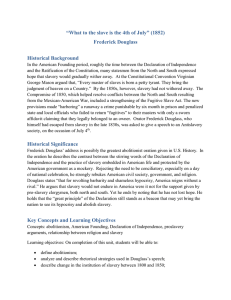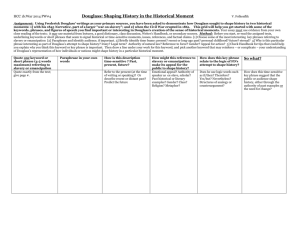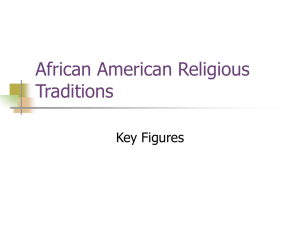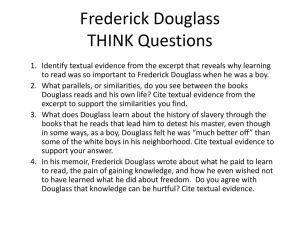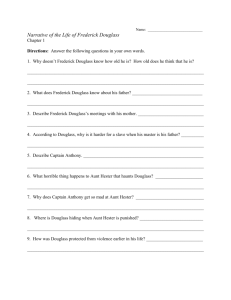Frederick Douglass`s Narrative of the Life of an
advertisement
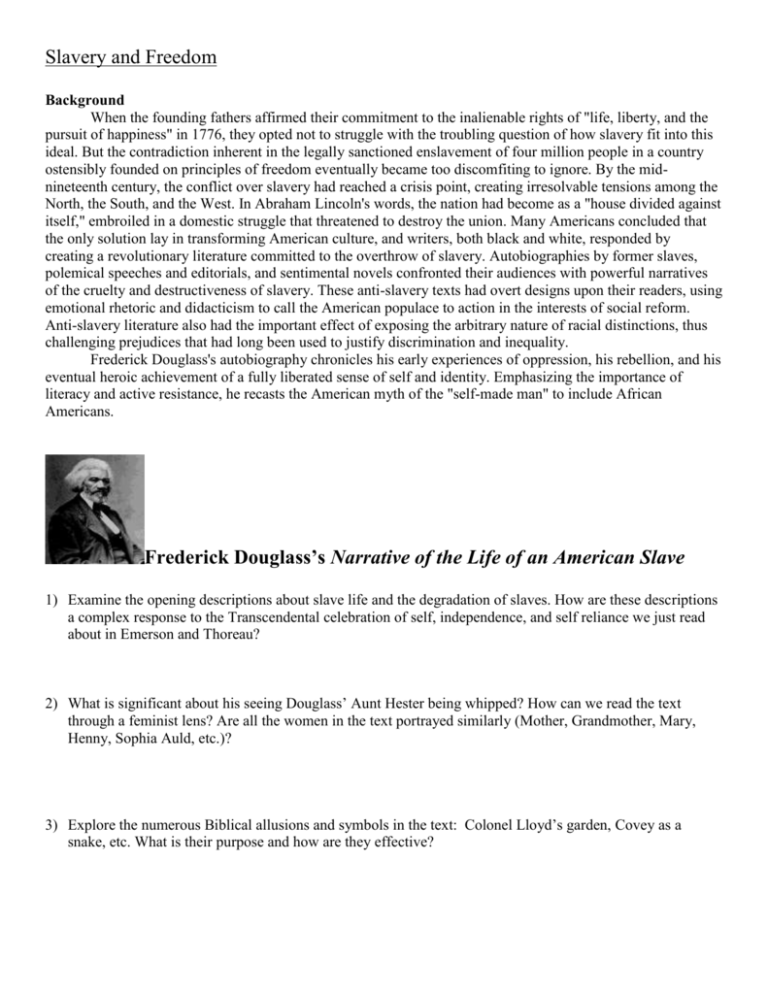
Slavery and Freedom Background When the founding fathers affirmed their commitment to the inalienable rights of "life, liberty, and the pursuit of happiness" in 1776, they opted not to struggle with the troubling question of how slavery fit into this ideal. But the contradiction inherent in the legally sanctioned enslavement of four million people in a country ostensibly founded on principles of freedom eventually became too discomfiting to ignore. By the midnineteenth century, the conflict over slavery had reached a crisis point, creating irresolvable tensions among the North, the South, and the West. In Abraham Lincoln's words, the nation had become as a "house divided against itself," embroiled in a domestic struggle that threatened to destroy the union. Many Americans concluded that the only solution lay in transforming American culture, and writers, both black and white, responded by creating a revolutionary literature committed to the overthrow of slavery. Autobiographies by former slaves, polemical speeches and editorials, and sentimental novels confronted their audiences with powerful narratives of the cruelty and destructiveness of slavery. These anti-slavery texts had overt designs upon their readers, using emotional rhetoric and didacticism to call the American populace to action in the interests of social reform. Anti-slavery literature also had the important effect of exposing the arbitrary nature of racial distinctions, thus challenging prejudices that had long been used to justify discrimination and inequality. Frederick Douglass's autobiography chronicles his early experiences of oppression, his rebellion, and his eventual heroic achievement of a fully liberated sense of self and identity. Emphasizing the importance of literacy and active resistance, he recasts the American myth of the "self-made man" to include African Americans. Frederick Douglass’s Narrative of the Life of an American Slave 1) Examine the opening descriptions about slave life and the degradation of slaves. How are these descriptions a complex response to the Transcendental celebration of self, independence, and self reliance we just read about in Emerson and Thoreau? 2) What is significant about his seeing Douglass’ Aunt Hester being whipped? How can we read the text through a feminist lens? Are all the women in the text portrayed similarly (Mother, Grandmother, Mary, Henny, Sophia Auld, etc.)? 3) Explore the numerous Biblical allusions and symbols in the text: Colonel Lloyd’s garden, Covey as a snake, etc. What is their purpose and how are they effective? 4) Why is it so important for Douglass to learn to read? Explore the importance of literacy in the text and how Douglass’s narrative control reflects his own control of his life. How does writing one’s story become a way of finding one’s identity? 5) We have read many characters in American literature exploring or escaping into the woods (Hawkeye, Rip Van Winkle, Thoreua, etc). What kind of similar or different meaning surrounds the woods for Douglass? Is it dangerous or safe? Is it primitive or civilized? Explain. 6) How can we read the text as a classic example of a Hero’s Journey? (Ordinary world, call to adventure, reluctant hero, wise mentor, seizing the sword, resurrection, return with elixir) See steps on website. 7) Marxist theorists believe that workers have a “False Consciousness” – workers are fooled into believing and contributing to a system that benefits those in power. How can we read the text through a Marxist lens? 8) Many parts of the text suggest slight embellished or fabrication for effect. Some parts cannot be accurately and historically documented. What effect, if any, does this have on our reading of the text and his argument against slavery?
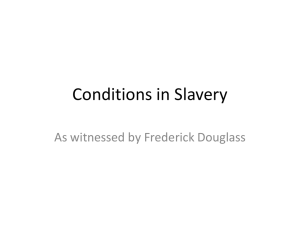
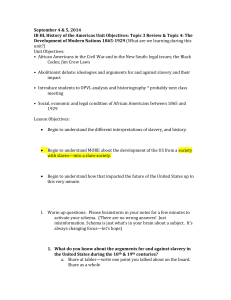
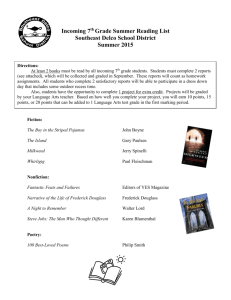
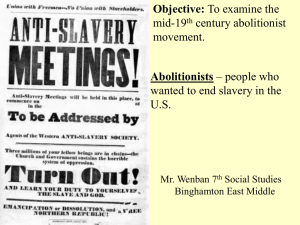
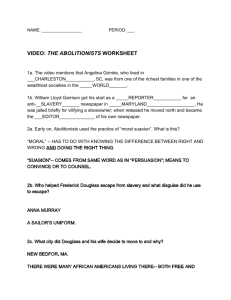
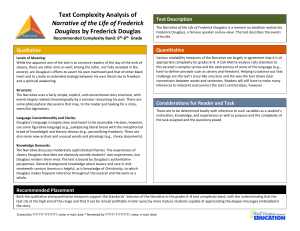
![Unit 1: Colonial America [Discovery to 1776]](http://s3.studylib.net/store/data/009619002_1-79f813c60fb75b8a63dd26feaf2bf5e1-300x300.png)
